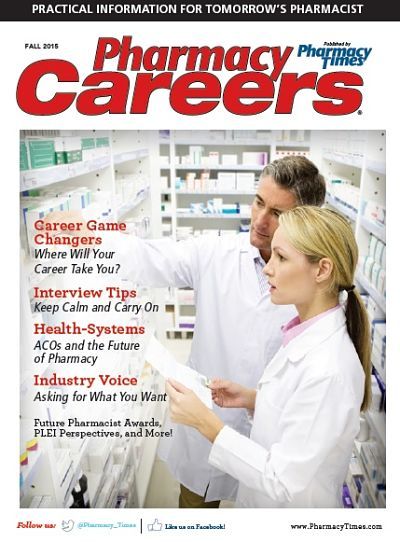Publication
Article
Pharmacy Careers
In the Field: Providing Convenient Patient Care Through Mass Merchandiser Pharmacies
Author(s):
For a number of pharmacists, mass merchandiser pharmacies offer opportunities to provide patient care that may not be available to those in hospitals or smaller retail pharmacies.
For a number of pharmacists, mass merchandiser pharmacies offer opportunities to provide patient care that may not be available to those in hospitals or smaller retail pharmacies.
Larry Rutebuka, PharmD, a pharmacist with Walmart, was initially drawn to this setting by the greater number of patients he would be able to serve.
“Working for a mass merchandiser pharmacy gives you a huge patient population to tap into, and coupled with the accessibility of the pharmacist in this setting, you really have a great opportunity to impact the lives of those customers,” Dr. Rutebuka said in an interview with Pharmacy Careers. “This setting is ideal for pharmacists who truly enjoy interacting with patients and being a resource for health information.”
Aside from serving a larger customer base, mass merchandiser chains also sell a great variety of non-medication products. While many of these products may seem irrelevant to pharmacy practice, Walmart pharmacist Dmitry Kunin, PharmD, MBA, explained that access to these products allows for a unique approach to patient consultations.
“Within Walmart, we can walk the grocery department with our diabetic patients and discuss the impact their diet has on their blood sugar,” Dr. Kunin said. “Asthmatics and pulmonary disease sufferers can be educated about how to keep their home free of triggers in the hardware department. Unlike different and often smaller pharmacy settings, a mass merchandiser provides a holistic approach to the practice of pharmacy and overall health care.”
Additionally, some pharmacists have suggested that the structure of a mass merchandiser chain grants pharmacists greater access to resources and technology, as well as a larger peer network.
“I believe one of the major benefits of working as a mass merchandiser pharmacist is the number of resources I am provided,” said Walmart pharmacist Alexis D. Hadley. “Our prescription filling system was created by Walmart pharmacists for patient safety. As a Walmart pharmacist, I am encouraged to make suggestions to improve this system as well as the set of practices we use to fill a prescription. That is very rewarding.”
“With a mass merchandiser, there is a network,” added Walmart pharmacist Beth Jarrett, PharmD. “My colleagues have been a resource both professionally and personally. It is comforting on a tough day, as well as a rewarding day, to know that someone has gone through the same experience, as it helps us to grow as people and health care providers.”
Mass merchandiser pharmacies could potentially offer significant benefits to patients, as well. According to Dr. Kunin, the variety of products sold by mass merchandiser stores affords patients a level of convenience unavailable at smaller retail pharmacies.
“In today’s hectic and busy lives, there is a need for high-quality and low-cost one-stop shopping,” Dr. Kunin said. “A mass merchandiser like Walmart fulfills such a need and goes the extra mile with value-added services. From the health care perspective, patients are able to find affordable and accessible health care, while fulfilling the needs of their shopping lists. By providing patients a way to save money and live better, our patients don’t have to make the difficult choice of putting food on the table or bringing their child’s antibiotic home.”
Drs. Hadley and Jarrett also suggested that patients are drawn to mass merchandiser pharmacies because of their ability to stock a greater variety of medications and sell them at a cheaper price.
“Walmart rolled out the first $4 prescription list, and that was truly a game-changer in the mass merchandiser pharmacy industry,” Dr. Hadley said. ”When we announced that list, I saw firsthand how it enabled many patients the opportunity to be compliant on medications they previously could not afford.”
However, working for a mass merchandiser is not without its challenges. For Dr. Rutebuka, the corporate structure forces him to consider how his team’s actions will affect not only his individual store, but the company as a whole.
“Being part of a mass merchandiser means that you are part of a much larger team with several moving pieces,” Dr. Rutebuka said. “As a pharmacist in this setting, you have to be able to understand that there are different needs, goals, and expectations outside of your pharmacy. At times those needs, goals, and expectations don’t directly impact you in the pharmacy, but as a team player you need to lend your support.”
Dr. Jarrett added that pharmacists at mass merchandiser pharmacies will often have to meet a high demand for prescriptions, necessitating the establishment of a reliable work flow process.
“Prescription volume can be much greater at a mass merchandiser,” Dr. Jarrett said. “Scheduling correctly is imperative in order to operate smoothly with high volume.”
Despite these difficulties, Dr. Jarrett emphasized that her experience as a pharmacist for a mass merchandiser has been immensely rewarding. She ultimately advised pharmacy students who are considering this work setting to make the most of their position by forging strong relationships with the many patients they will have the opportunity to treat.
“Do not think of a career with a mass merchandiser as a production facility or assembly line meant to mass-produce prescriptions,” Dr. Jarrett said. “Remember that each prescription is tied to a person, not a number or a process. Take time to counsel your patients and develop relationships. The people are what make the job worthwhile, and it is our responsibility as pharmacists to be more than just robots checking prescriptions for them.







